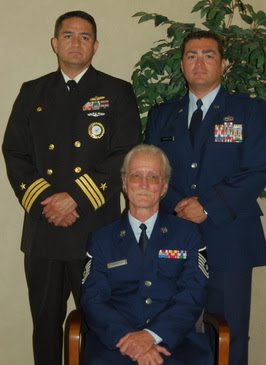The President of the Air Force Association weighs in...
AFA members, Congressional staff members, civic leaders, DOCA members, yesterday the President, Secretary of Defense, and Chairman of the Joint Chiefs of Staff (then later the Deputy Secretary of Defense, Under Secretary of Defense Policy, and Vice Chairman Joint Chiefs of Staff) rolled out the new defense strategy. You can find it at: http://www.defense.gov/news/Defense_Strategic_Guidance.pdfI know that was long but there was no way to link it, given the message arrived as an e-mail and not as an article in the Usual USAF Source. Speaking of the Usual Source... there are three discrete blurbs on this subject in today's report (01-06-2012), all with links to official statements on the subject of the new strategy.
I listened to the presentations and read the piece carefully. Initially, I was critical of the work. First it is not a “strategy” in the classic sense of the word (ends, ways, and means). You cannot have a strategy without detailing the resources and none were listed. Secondly it seemed to be just a compendium of thoughts on the strategic environment and a listing of missions of the armed forces. The latter seemed to be in priority order, but that is an assumption on my part and was not overtly stated. There was a lot of talk about process vice the tough choices. And finally, there were lots of words on what the Armed Forces will do and few words on what the Armed Forces won’t be doing – given a $450B budget cut. Like others, I could be critical about what was “not included.”
However, as I read the piece for the second time (and understanding that this is a public document … not a classified one which would be at the SECRET or higher level), I found much in it to commend it to you.
First, it recognizes the nation is at a turning point after a decade at war. We have a broader range of challenges than just the focus on the past wars. The force of the future will be smaller and leaner, but will be agile, flexible, ready, and technologically advanced. The department will avoid a “hollow force.” DOD will reorient the force towards the Asia-Pacific region. This puts a premium on Air, Space, and naval forces. As I was quoted recently [see: http://www.wired.com/dangerroom/2012/01/planes-cut/] – 100% of the Pacific is covered by air and space.
In the primary mission of US Armed Forces section, I was pleased to see that the mission to project power despite anti-access/area denial challenges was listed. Despite the fact that the authors did not mention one of the most important elements of power projection [Air Superiority], the idea that the Pentagon should look to the future shoots holes in the concept of “next-war-itis” and is long overdue. I found the concept of deterring and defeating aggression to be refreshing:
“Even when US forces are committed to a large-scale operation in one region, they will be capable of denying the objectives of – or imposing unacceptable cost on – an opportunistic aggressor in a second region.”
This puts a premium on those forces that can rapidly shift from one theater to another – predominantly Airpower.
I found the articulation of the concept of conducting long term occupation and stability operations to take into account the realities of what we have seen over the past ten years – where we projected vulnerability – with over 46,000 wounded and more than 6,200 dead. The piece says: “ … US forces will no longer be sized to conduct large-scale, prolonged stability operations.” In my words, we should take advantage of the inherent strengths of Airpower – speed, range, flexibility, technology – and limit the exposure of our forces to our enemies.
I liked the focus on the Guard and Reserves – both of which have carried a heavy load over the past decade.
And I thought the focus on science, technology, innovation, and the industrial base to be important to discuss in any strategy document. I also thought the concept mentioned in the paper about “reversibility” to be an important one in dealing with risk. We have not, in recent history, done well in predicting who, where, and when we will fight.
I might differ on the margins about things like the listing of Hezbollah as a terrorist organization, while leaving out Hamas (and others); talking about operating “effectively” in Cyberspace and Space [these are mediums in which we should dominate]; and suggesting that we can achieve our nuclear deterrence goals with a smaller nuclear force [depends on what the goals are]. But on balance, the document is welcomed relief to the past and recognition that the US has broad, enduring, and overarching goals … and challenges.
Finally, I have to back away and comment on the totality of the challenge facing the Department of Defense. Yes … we’re in a budget crisis. And … yes we need to cut government spending. However, during the Kennedy Administration this nation spent 50% of the federal budget on defense. It’s less than 20% today. Then we spent 9.5% of our GDP on Defense; today it’s 3.4% and getting lower. The question we must ask is: Should we balance the budget on the back of defense spending? We have proven over time that a weak America invites aggression. I’m reminded of the famous quote from President Reagan: “Of the four wars in my lifetime, none came about because the U.S. was too strong.”
Last comment: Documents like these don’t always drive resource decisions. Many times, the Services are given dollar bogeys in a “salami-slice” fashion … without regard for the strategy. We should all watch the budget rollout to see if the resources match the “strategy.”
Let me ask you to read the document and tell me what you think.
For your consideration.
Mike
Michael M. Dunn
President/CEO
Air Force Association
“The only thing more expensive than a first-rate Air Force is … a second-rate Air Force.” -- Senate staff member





.jpg)




Kinda wonder what the classified docs say
ReplyDeleteYou can only imagine the response here at the U.S. ARMY CGSC...
ReplyDeleteLet's just say it's an interesting feeling when you're the only guy in the room who's service ISN'T going to get smaller (No Navy representation in my small group).
I pointed out the history professor's take on the German Army after WWI: When your Army is made smaller...you can retain the best and the brightest! It's a GOOD thing!
;)
Isn't going to make life any easier in the future though...
May you live in interesting times!
SN1
The military basic budget rose 86% since 2000. That number (250 billion) is before you add in the wars. With the wars, the budget rose to 700 billion.
ReplyDeleteIn 2000 the USA was spending 300 billion on defense.
There are only about 250 billion stars in the Milky Way.
Anyway, you could cut defense by 250 billion, and still have the same military we had under Ronald Reagan, which was huge.
Reagan bucks bought more than BO bucks
ReplyDeleteSo, does that target painted on your back to identify you as a military retiree itch much?
ReplyDeleteWv -- monshist. No comment.
I don't think the military should be funded by a percentage of GDP.
ReplyDeleteI think it should be funded by how many troops it needs to invade China.
Then calculate how many MRE's, and bullets each trooper needs to kill every fucking Chicom that pops their head up.
If everyone in America has to be homeless, then so be it.
War is the only reason humans are on the planet.
IT: I'm thinkin' the classified docs don't say much more than what was said publicly. We don't have a budget yet.
ReplyDeleteBuck: Yeah, I can imagine there was much gnashing and thrashing where you are.
étoiles: Good point. You too, Skip.
Moogie: Us retirees ARE wonderin'.
Anon: I'm glad you're not king.